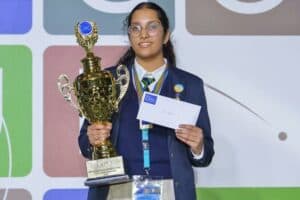The Greek mother of the first baby born using DNA from three people on Friday praised the revolutionary technique that helped her conceive -- and thanked the mystery woman who donated her egg.

Under the terms of the treatment, she was not allowed to meet the donor, said 32-year-old Matina Karavokyri. But she had a message for the woman whose egg donation allowed her to finally have a child by in vitro fertilisation (IVF).
“I would like to thank her very much,” she told the Athens-Macedonian News Agency (ANA).
“She is one of the many people that helped to make me happy. I will never be able to forget her, even though I do not know her. I wish her all the best.”
A team of Greek and Spanish doctors helped her give birth to a baby boy Tuesday using a new IVF technique they call the Maternal Spindle Transfer method, at the Institute of Life, in Athens.
The team used an egg from the infertile mother, the father’s sperm and another woman’s egg to conceive the baby boy, transferring genetic material with chromosomes from the mother to the egg of a donor whose own genetic material had been removed.
A similar DNA-switching technique was used in Mexico in 2016 to avoid transmission of a mother’s hereditary illness to her child.
This new technique was developed to help mothers who had failed multiple times to conceive through IVF treatment because of genetic disorders or other problems.
Karavokyri said she had made four unsuccessful attempts at IVF fertilisation when they were offered the new technique.
“Then I was given the choice to try this new method and I did not think twice,” she said.
And the new technique meant she could keep her genetic material.
“It does not contain anything from a third person. It’s ours a hundred percent,” Karavokyri added.
“We finally managed to become parents and acquire a healthy and biological child, thanks to a great scientific advancement that will enable many women to have the child they tried for with IVF treatments for so long and who think they cannot succeed,” she said.
Greek embryologist Panagiotis Psathas led the team who pioneered the approach, working with Spain’s Dr Nuno Costa-Borges.
Some specialists in the field however, have raised ethical reservations.
“I’m concerned that there’s no proven need for the patient to have her genetic material removed from her eggs and transferred into the eggs of a donor,” said Tim Child, Oxford University professor and medical director of the Fertility Partnership.
“The risks of the technique aren’t entirely known, though may be considered acceptable if being used to treat mitochondrial disease, but not in this situation,” he said in a statement.






